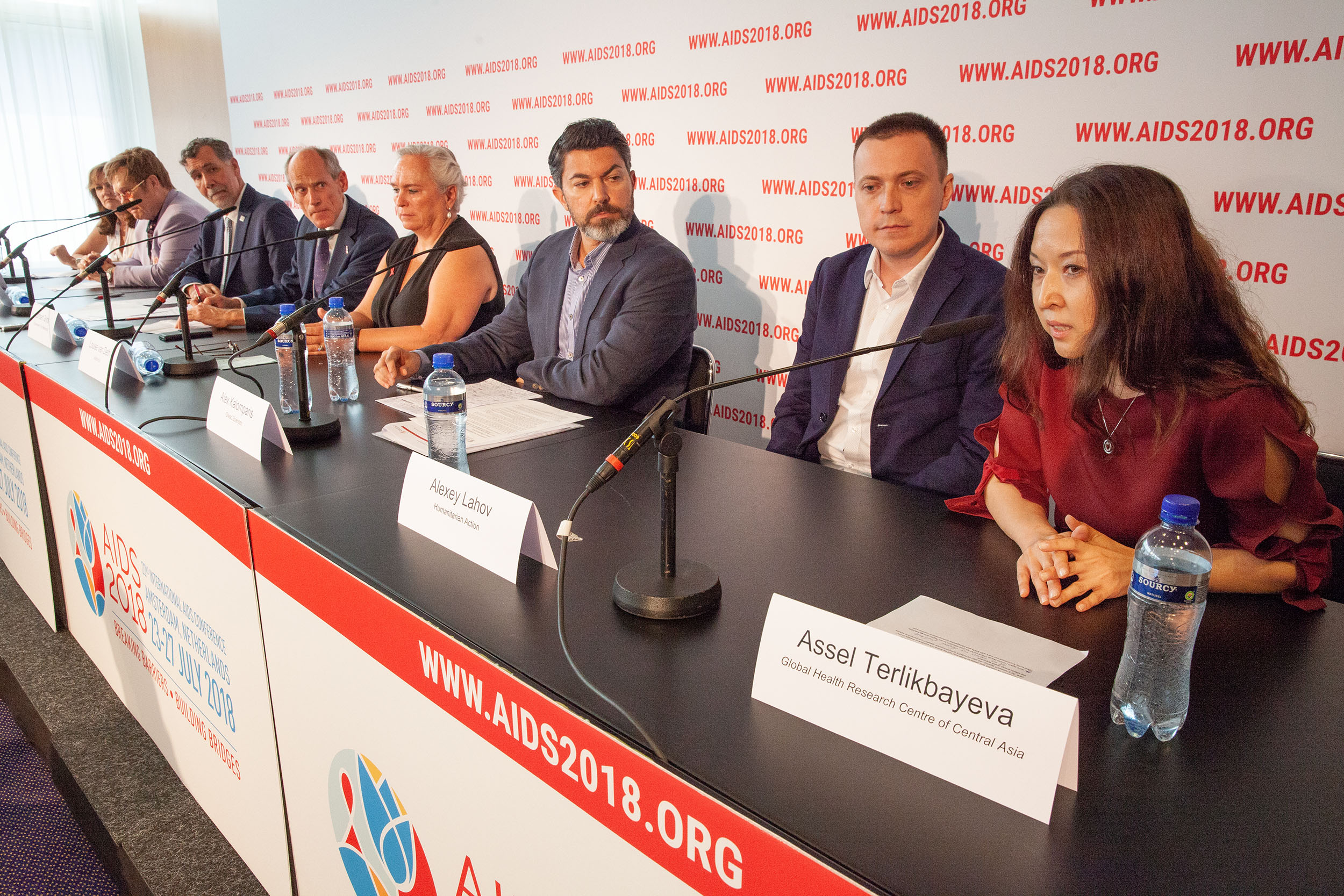Global leaders including most of the SIG team recently convened at the International AIDS Society conference #AIDS2018 to discuss the rising HIV epidemic in Central Asia. Our Director Dr. Nabila El-Bassel has worked in the region with the Global Health Research Center for Central Asia (GHRCCA) for over a decade and recently shared her reflections about the region and the conference in an article published by the Columbia School of Social Work below.

The Netherlands, Amsterdam, 24-7-2018.
Pressconference on Eastern Europe and Central Asia with Assel Terlikbayeva describing situation on AIDS/HIV in the region.
Photo: Rob Huibers for AIS.
International AIDS Conference Focuses on People Left Behind in Central Asia and Eastern Europe
by Nabila El-Bassel
For the past several years, Central Asia and Eastern Europe have been the only areas of the world where the number of new HIV infections and AIDS-related deaths are on the rise, due largely to injection drug use. This region also lags behind the rest of the world in terms of the quality and coverage of HIV services.
I am a social-behavioral scientist and social worker. I became involved in this crisis over ten years ago, when my colleagues at Columbia University and I set up the Global Health Research Center of Central Asia (GHRCCA), headquartered in Almaty, Kazakhstan.
We were sensitive to the fact that the region’s HIV/AIDS epidemic is concentrated among key populations that are highly stigmatized, not only men who have sex with men but also drug users, sex workers, and migrants. On a daily basis, such individuals face multiple social and structural barriers that prevent them from getting the treatment they need. The statistics are stark. Less that 40 percent of those who inject drugs in Central Asia and Eastern Europe are able to access antiretroviral treatment, of which only 19 percent have achieved viral suppression. Methadone treatment is not even available in several Central Asian countries.
Given my long and deep commitment to Central Asia, I have been surprised by how often the region is neglected by the global AIDS community. This year, however, I am happy to report that the situation appears to be changing.
Read the entire article on the Columbia School of Social Work site.
- See our photo album of the AIDS 2018 conference on Facebook.
- Follow SIG’s work by signing up for our monthly newsletter or following us on Twitter.



Connect with us